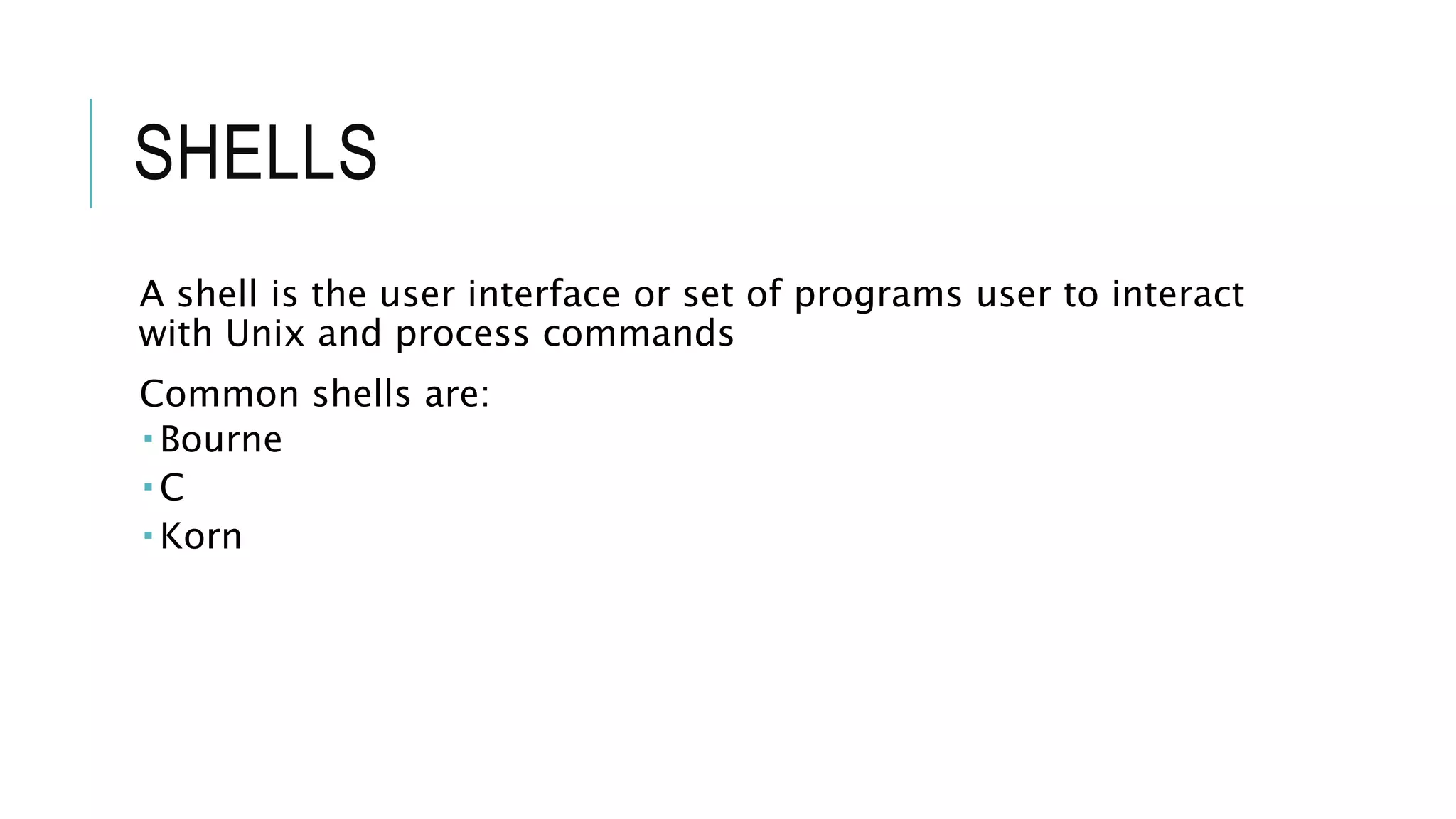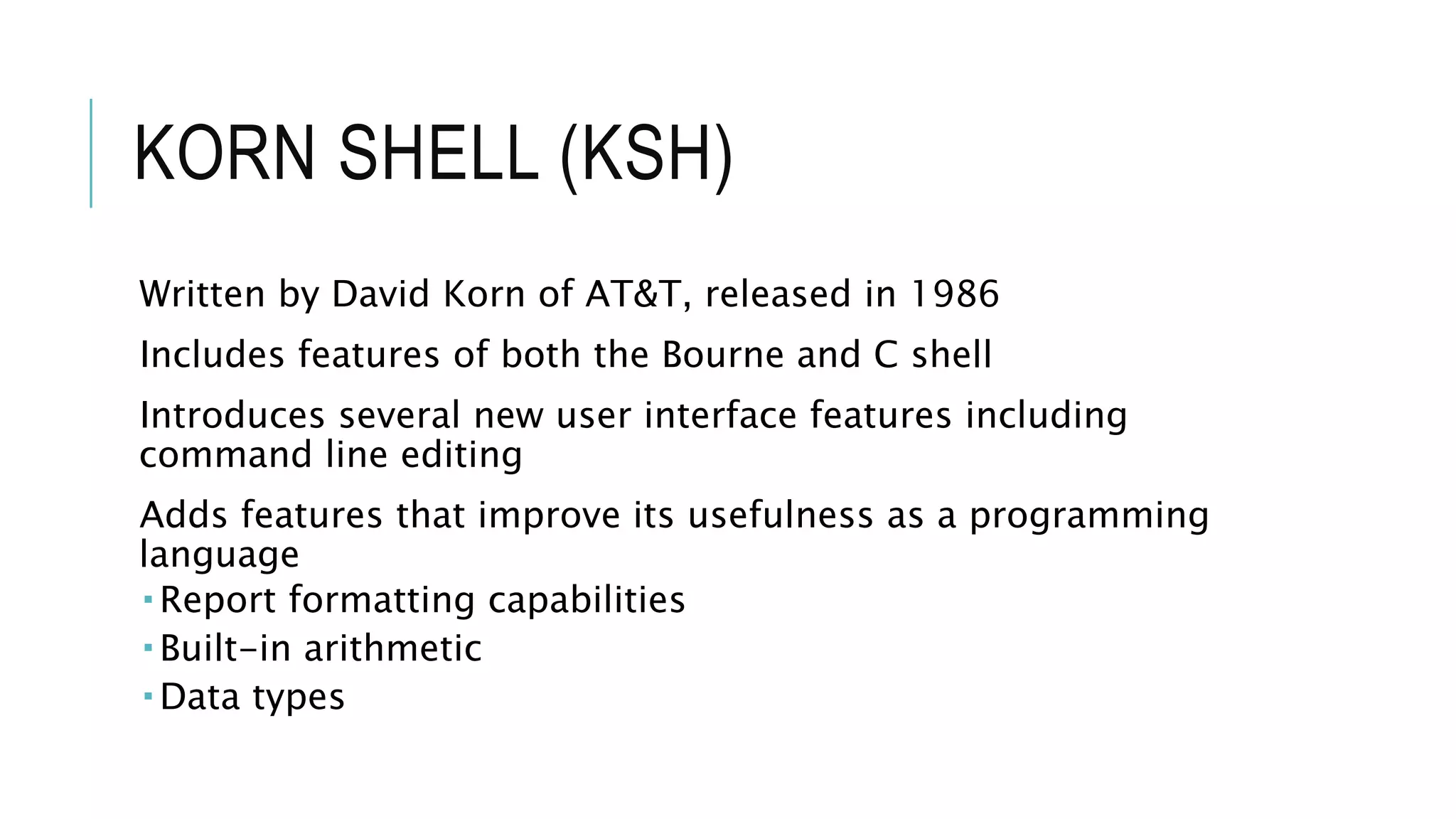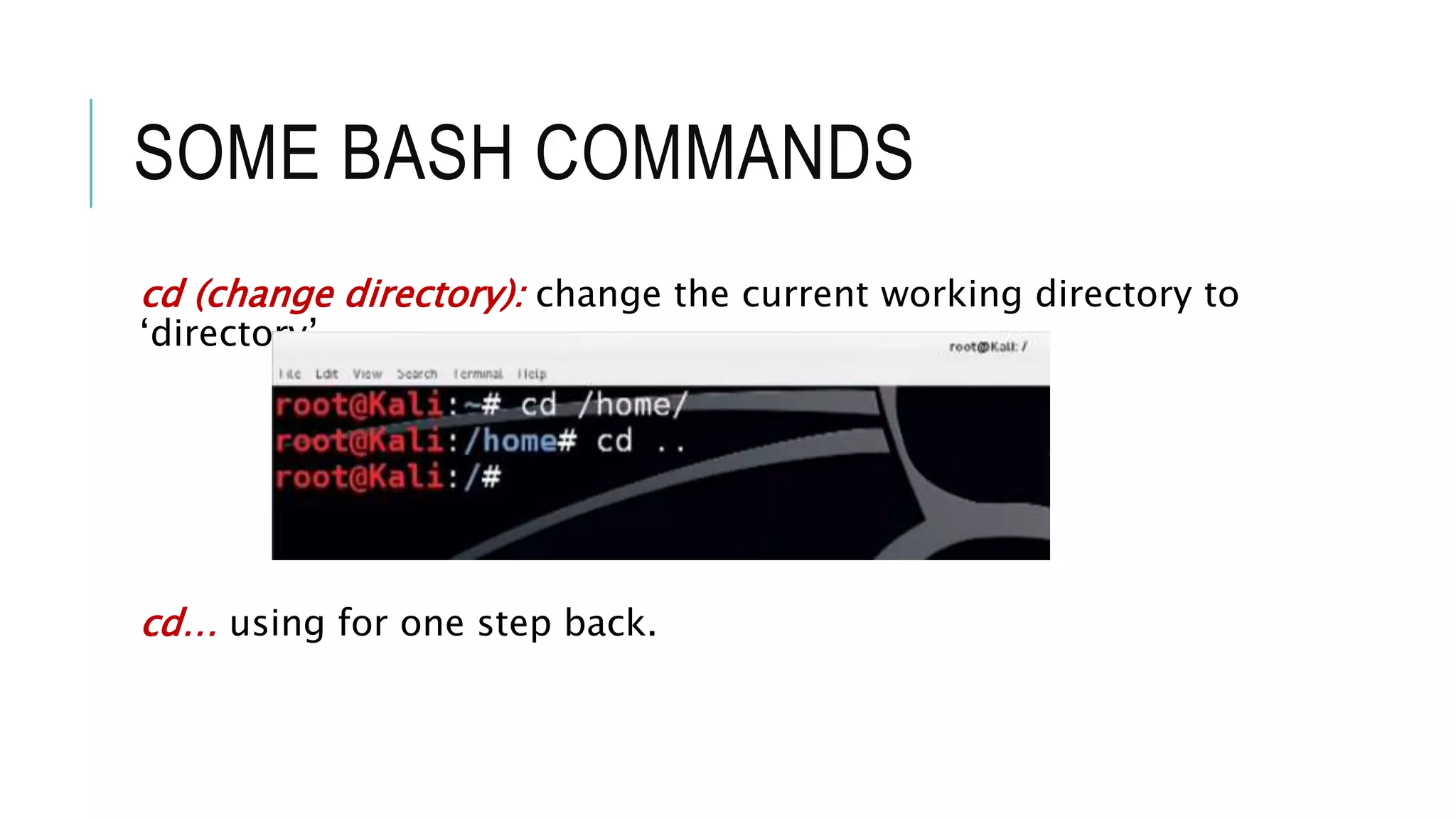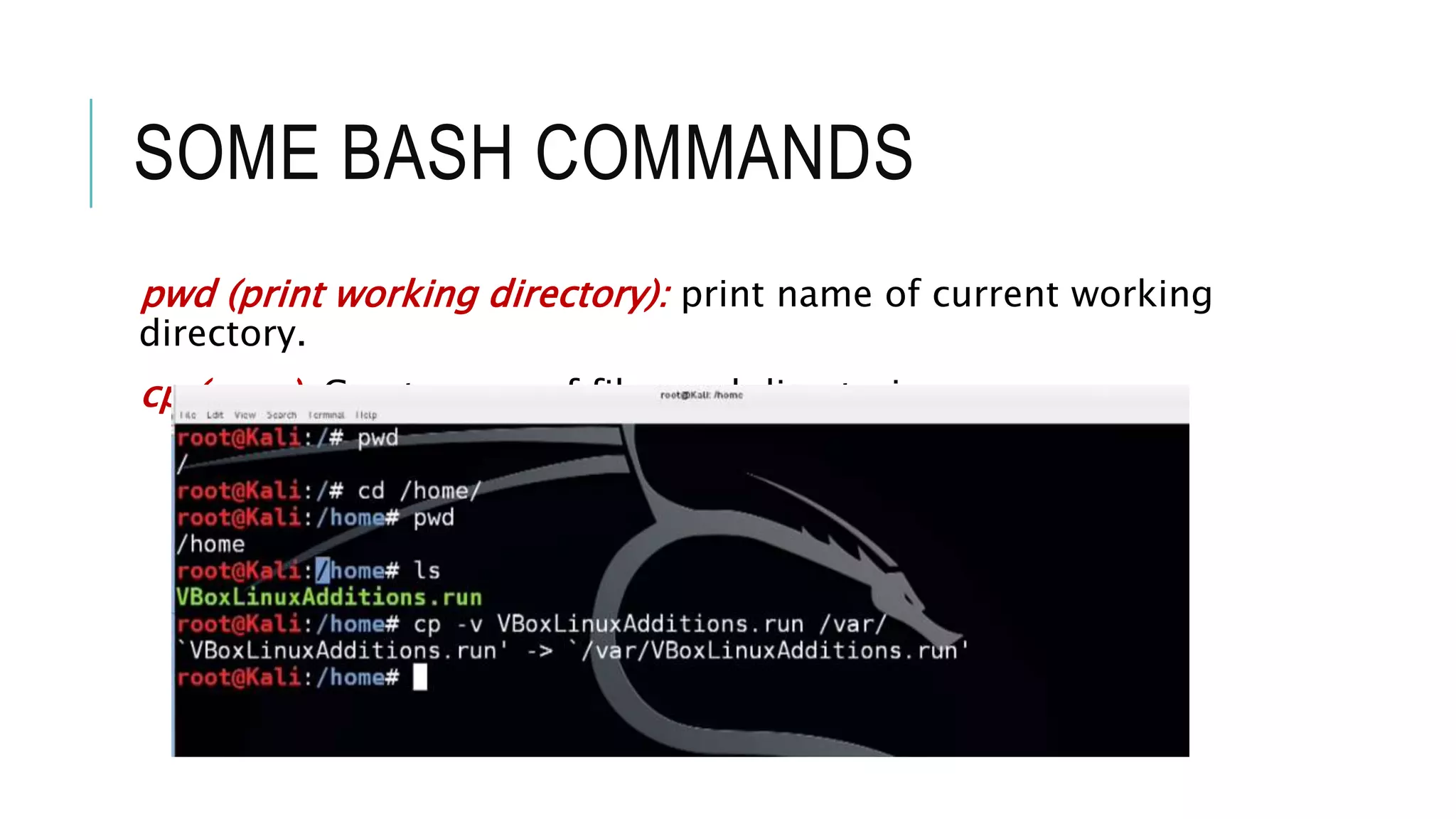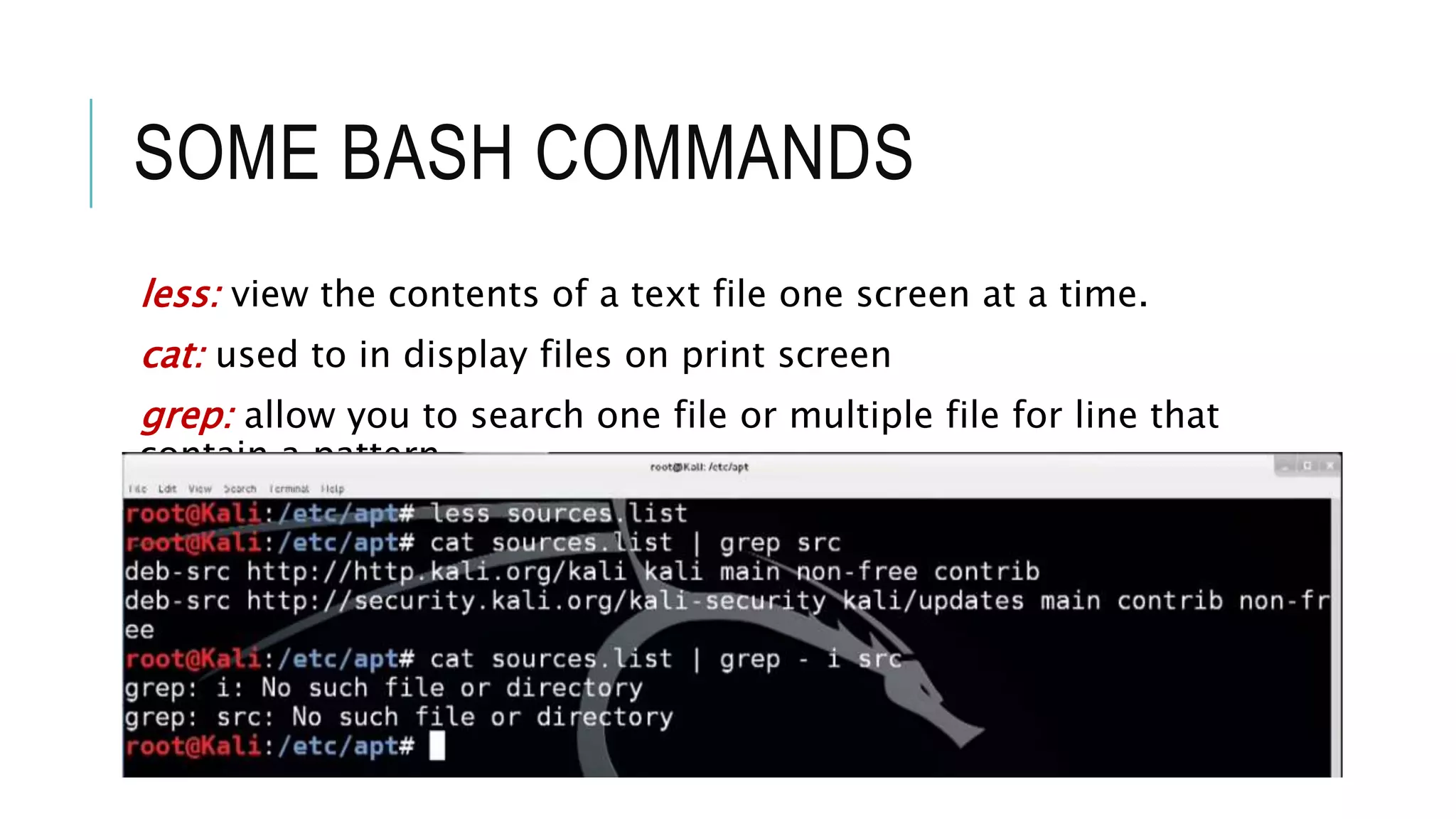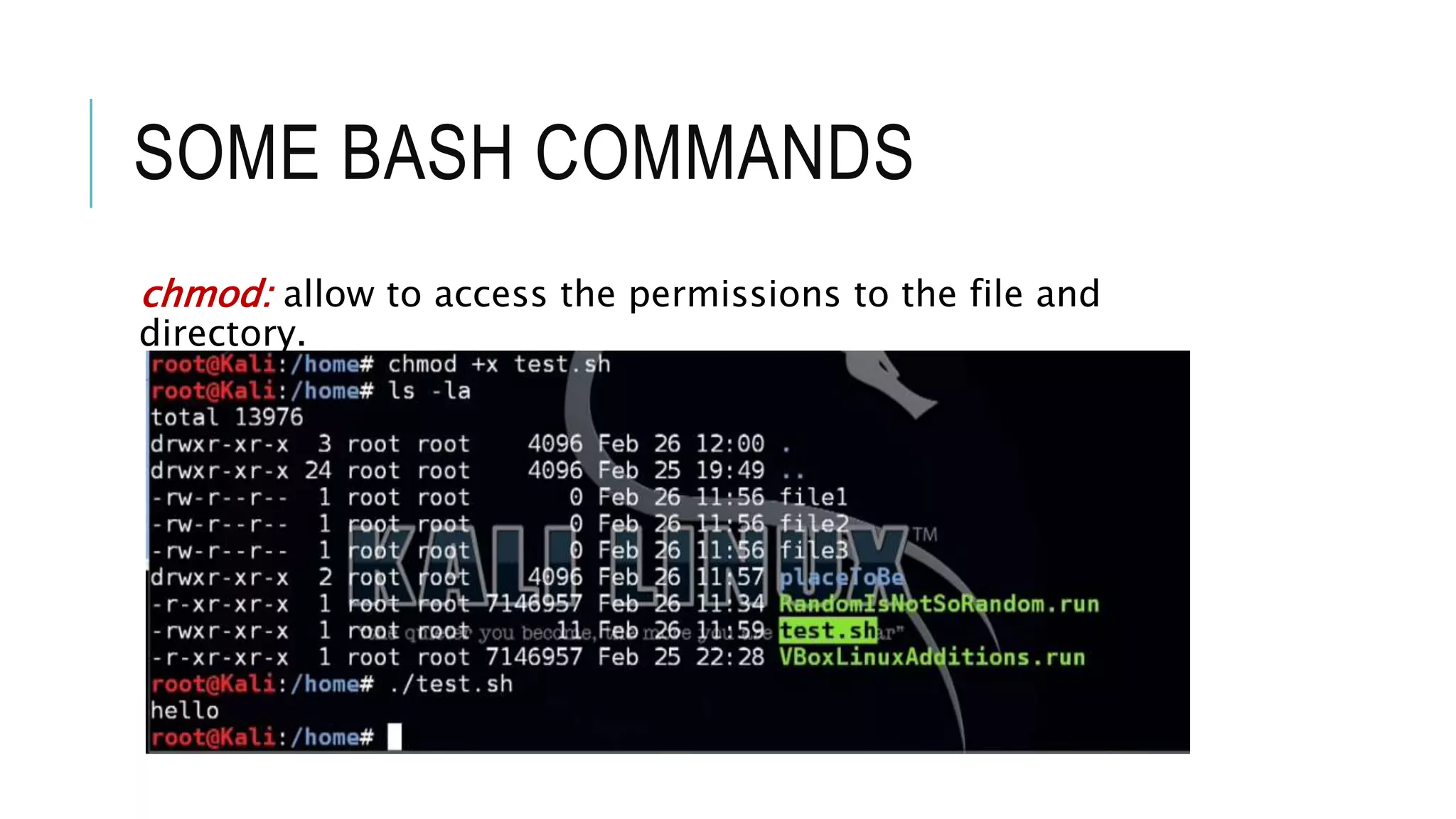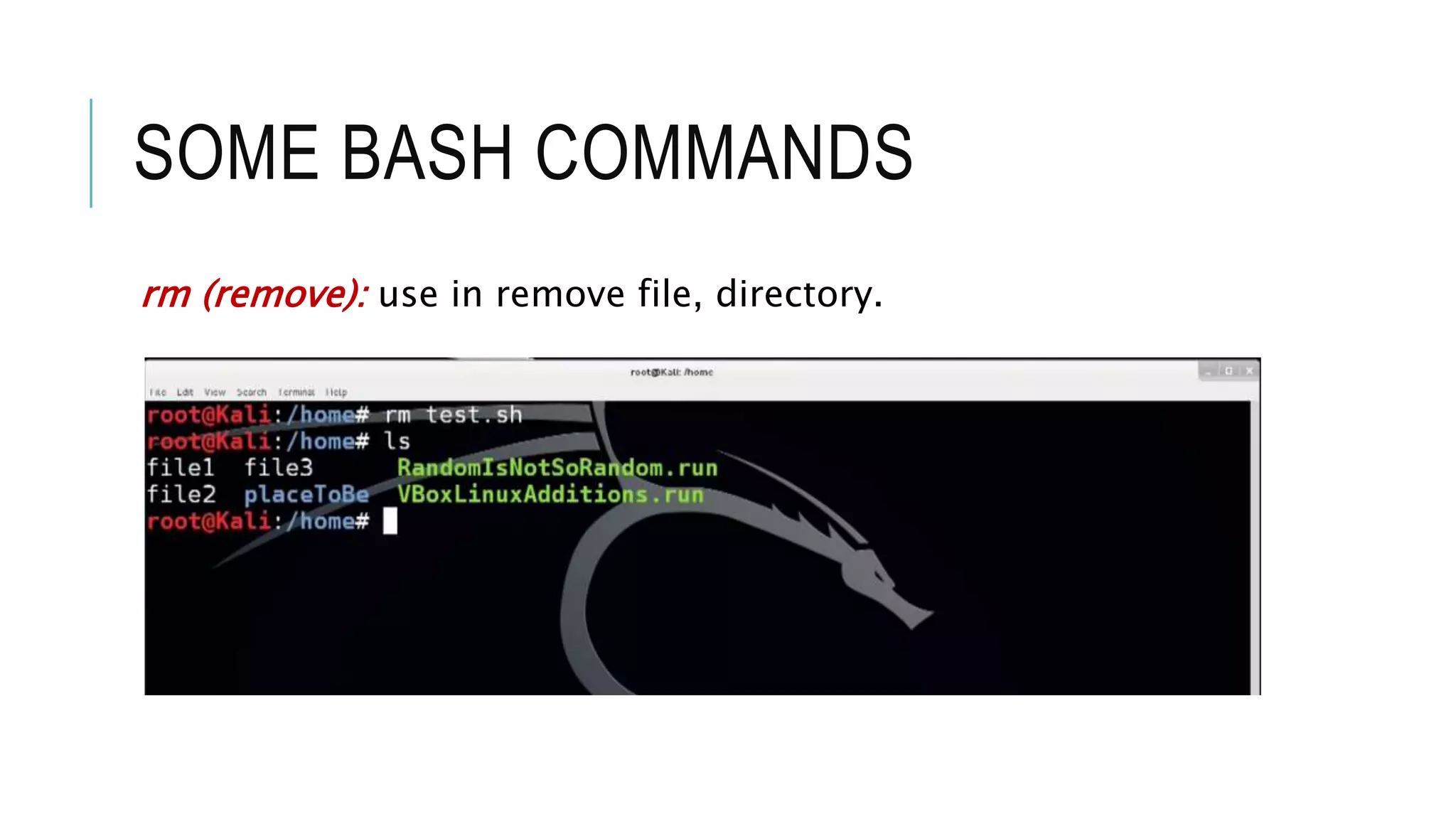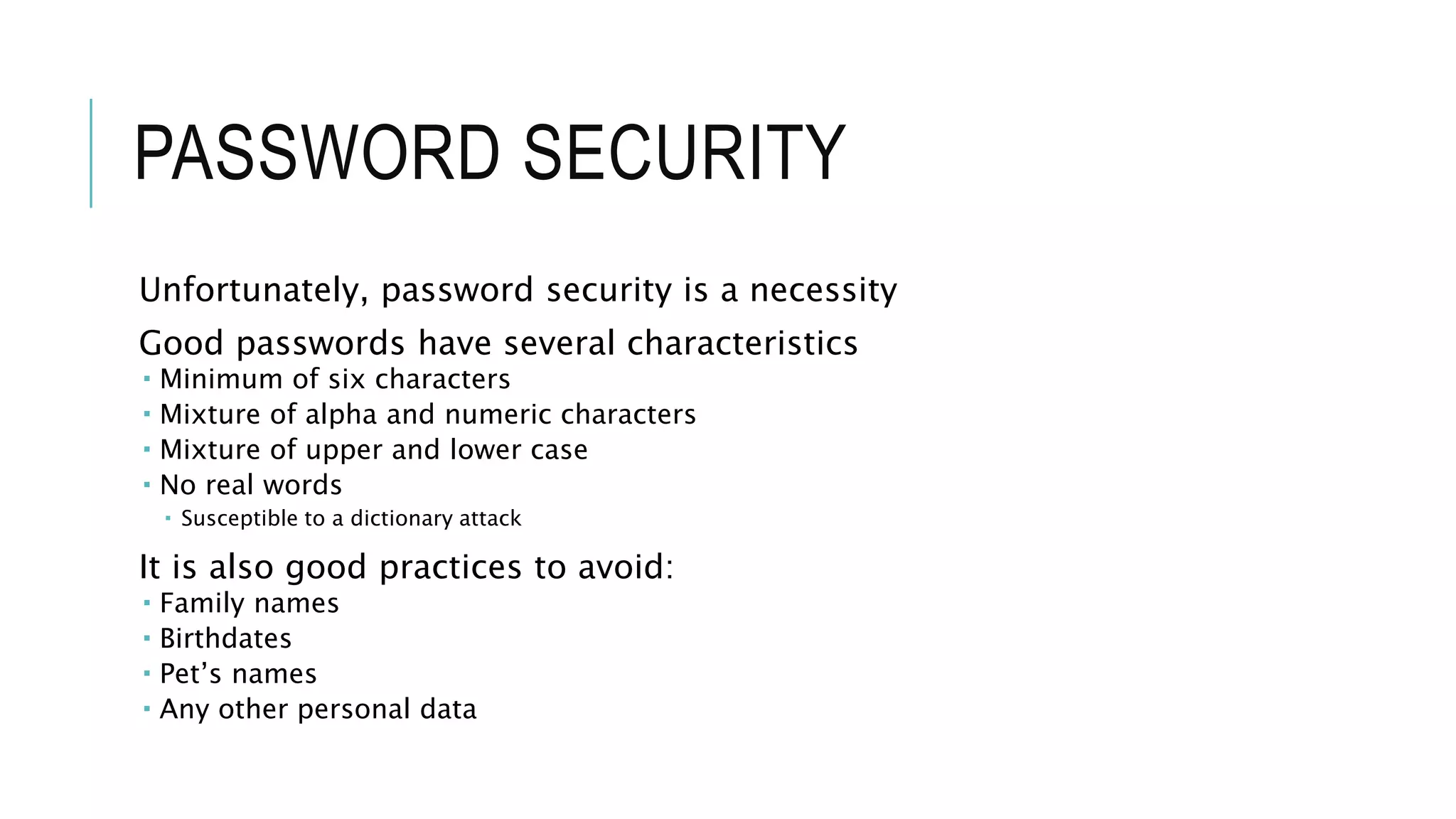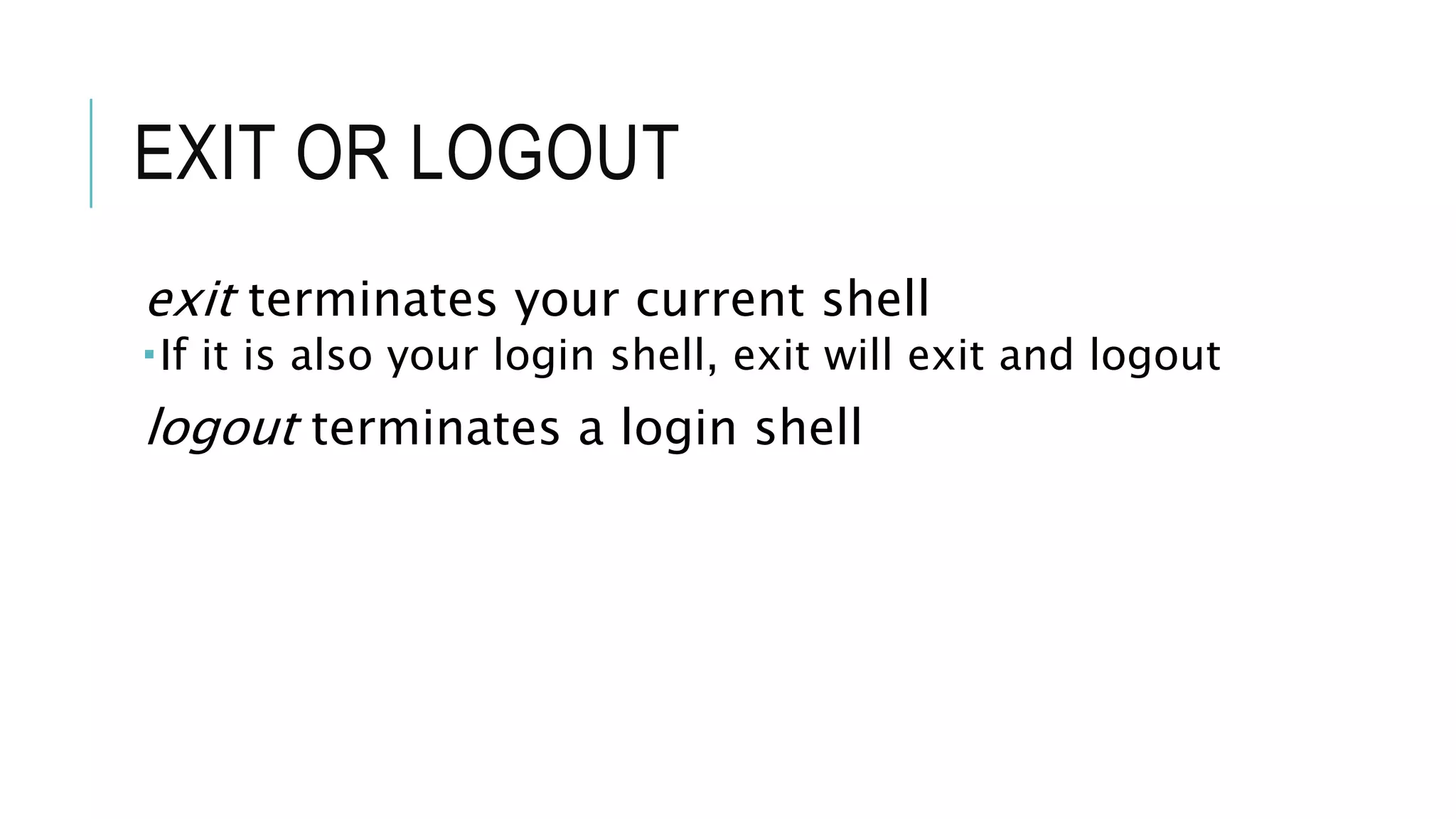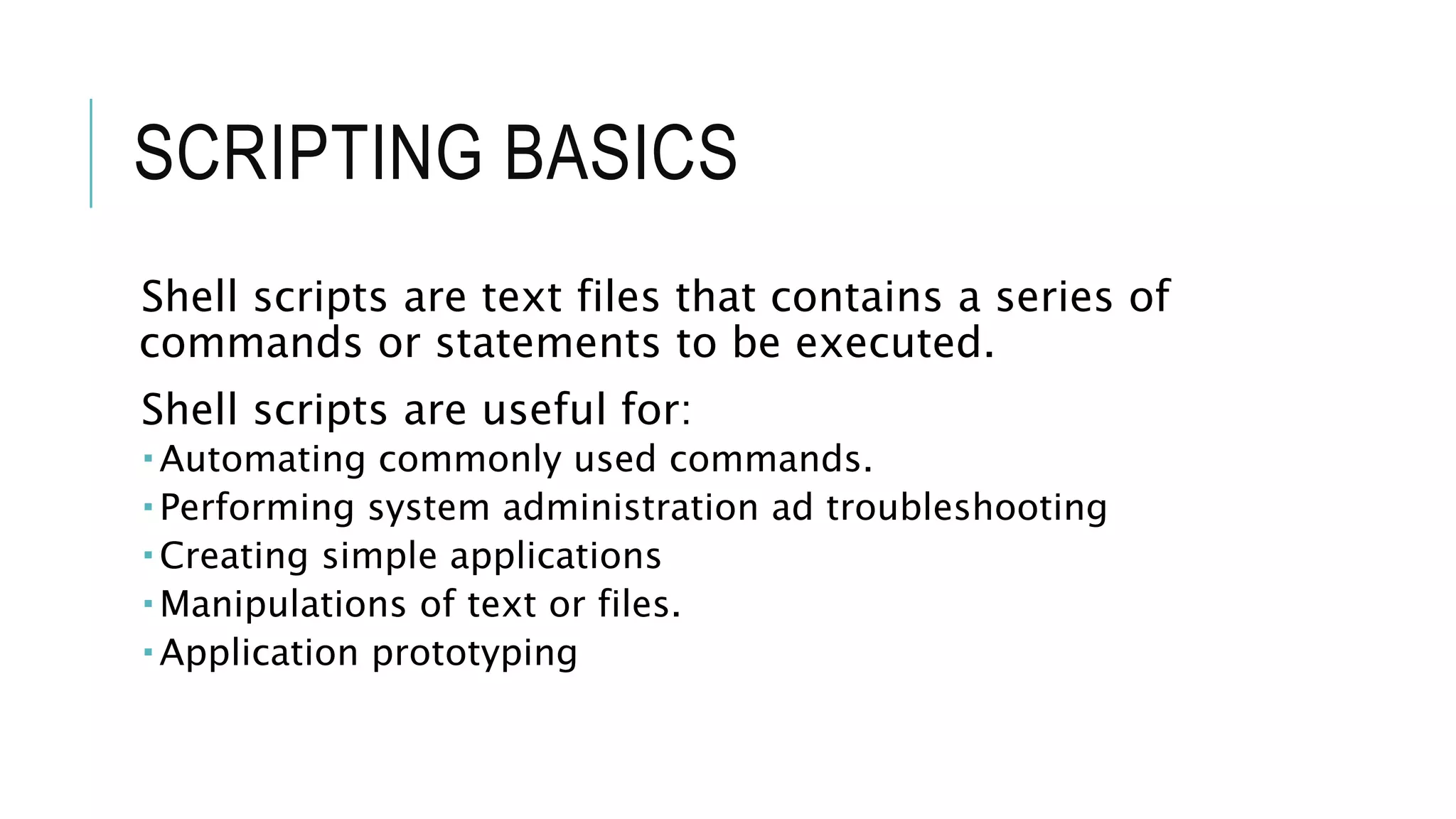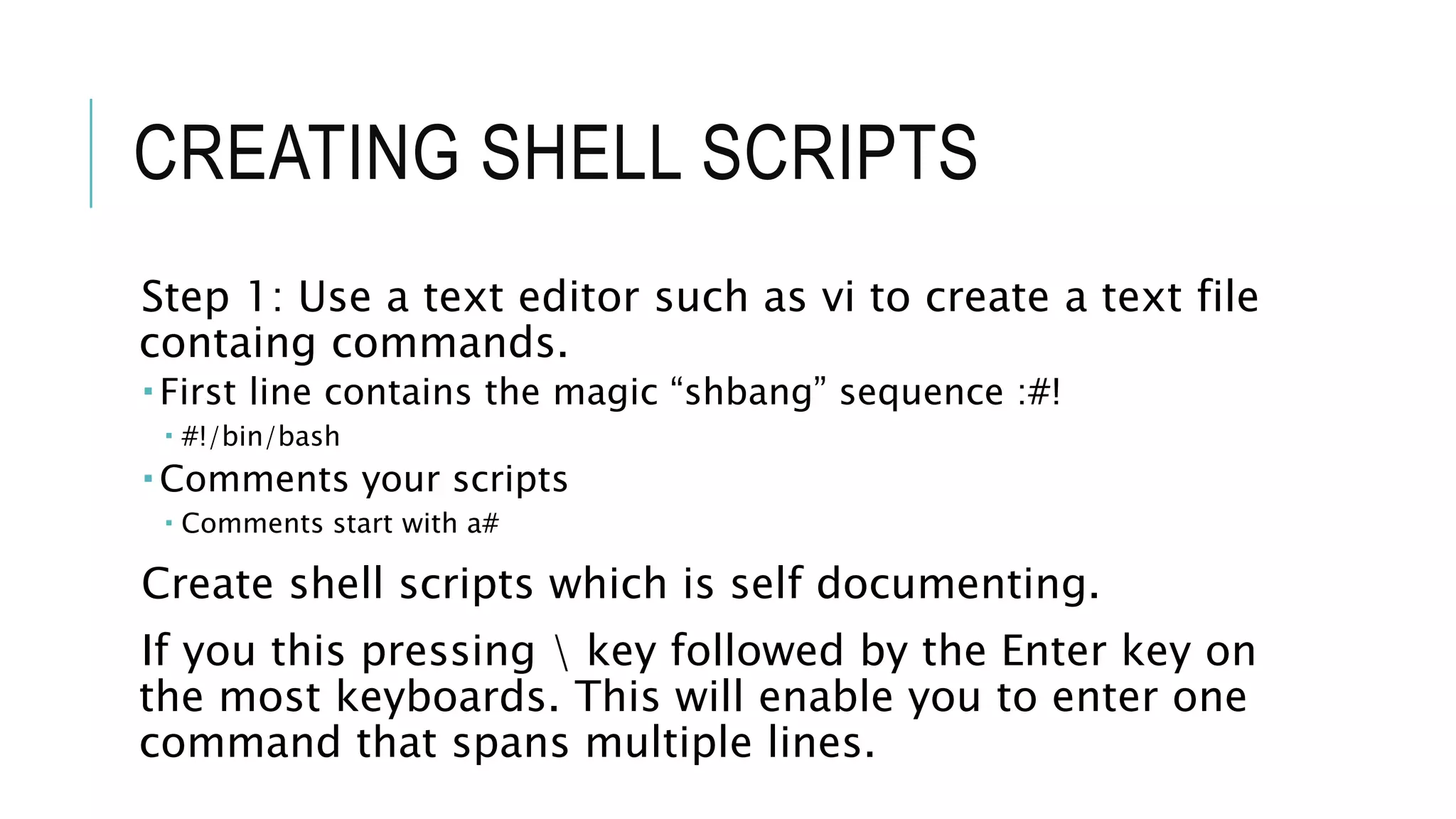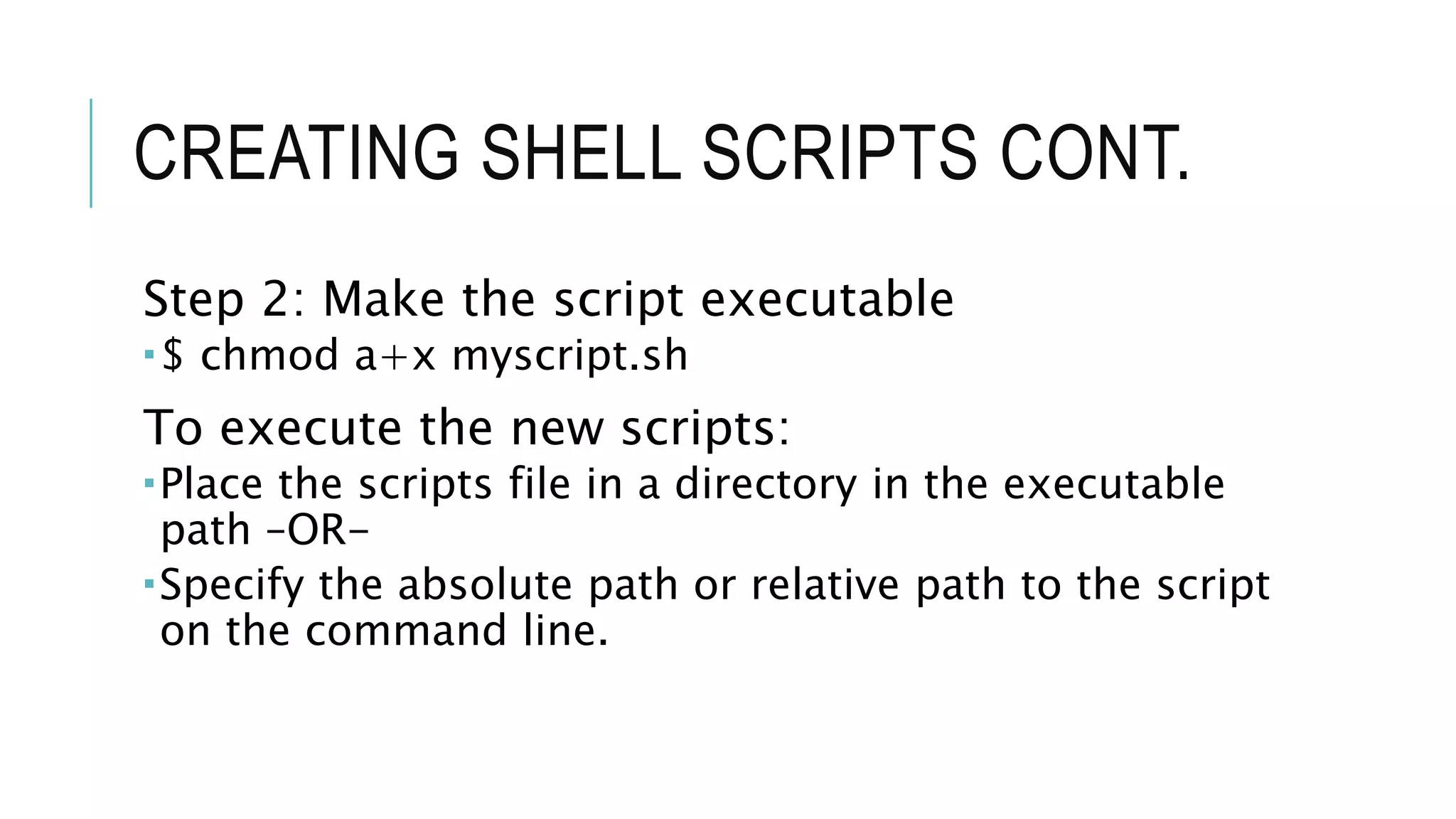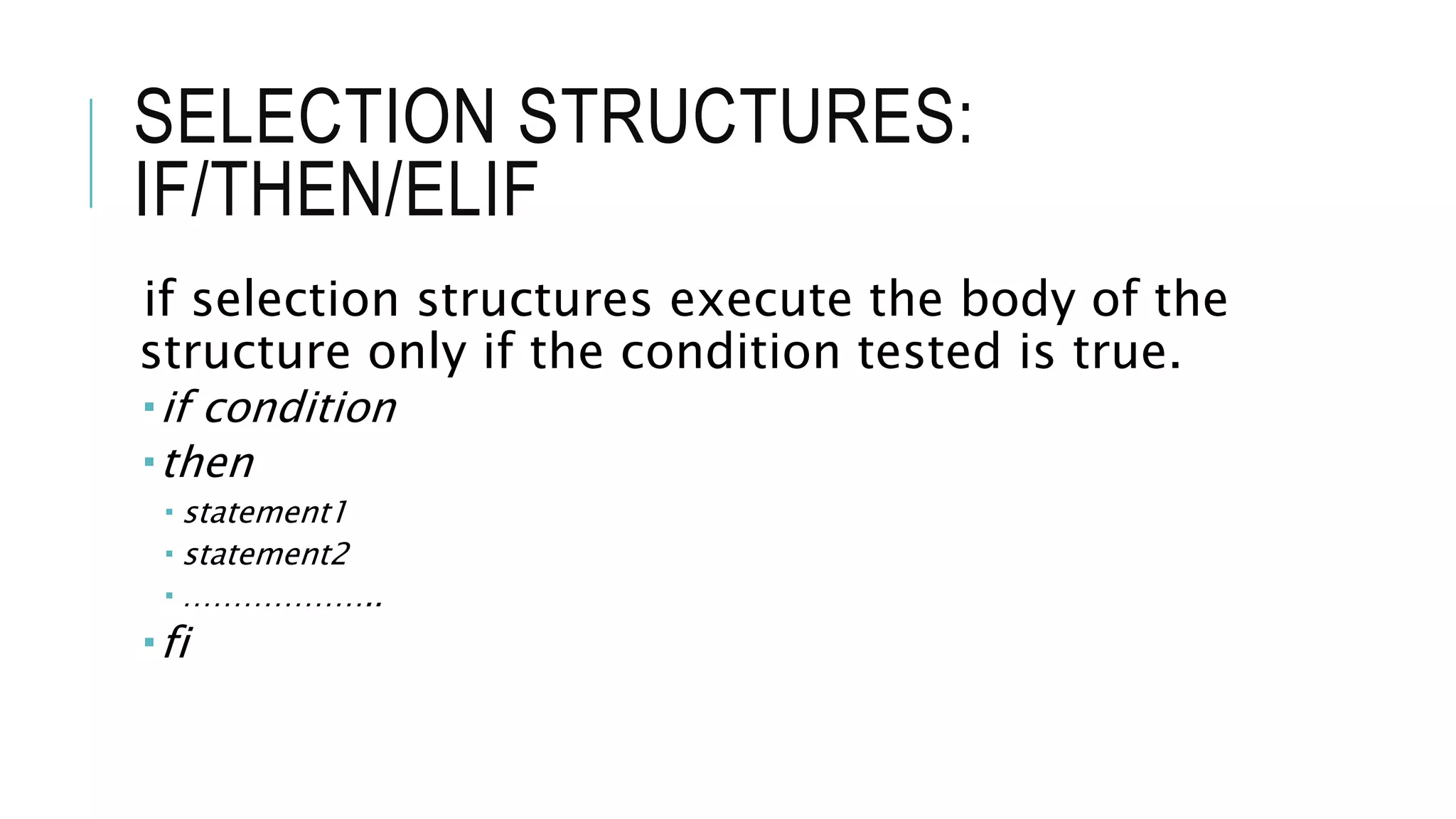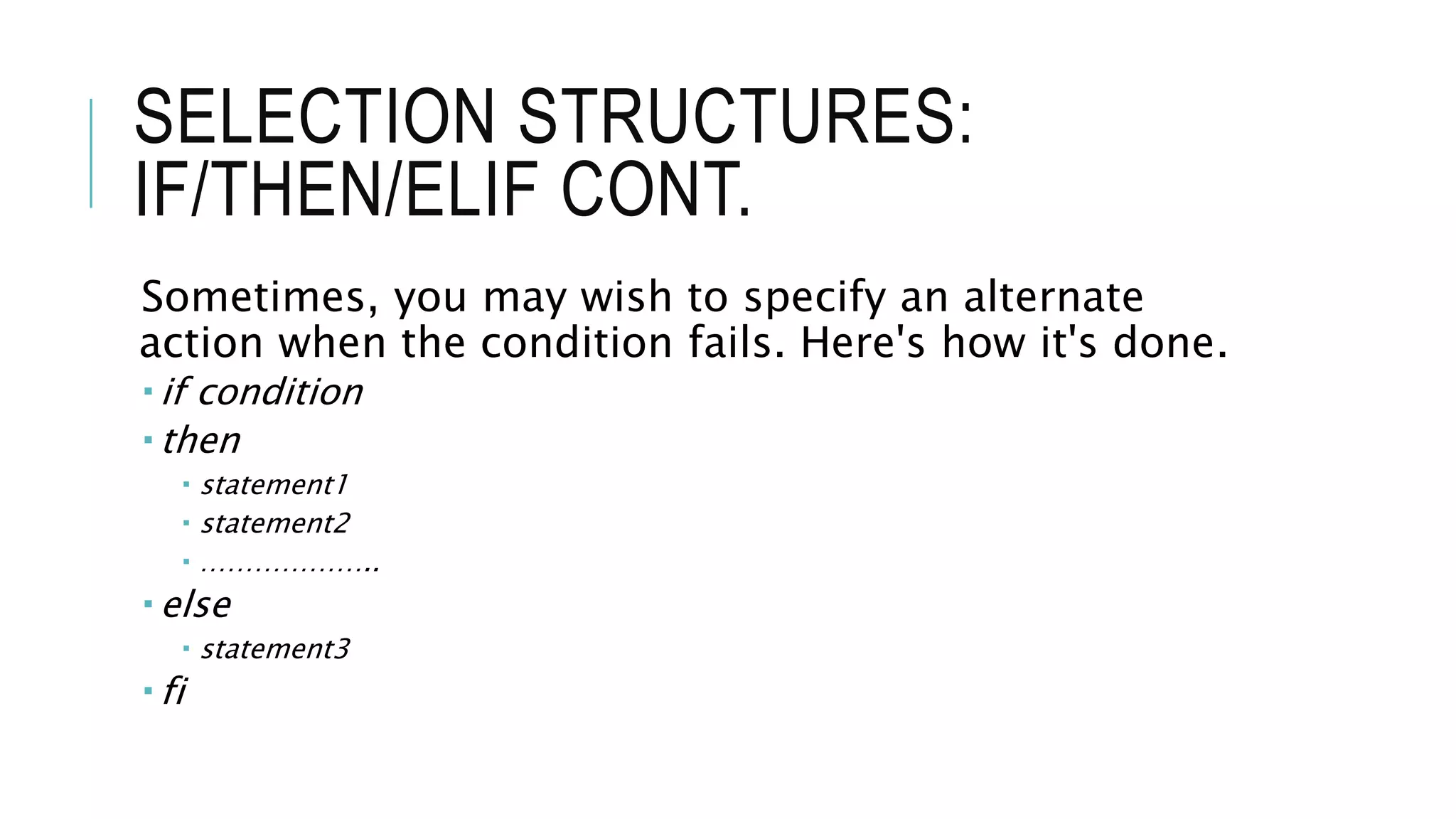This document discusses shell scripting and provides information on various shells, commands, and scripting basics. It covers:
- Common shells like Bourne, C, and Korn shells. The Bourne shell is typically the default and fastest, while the C shell adds features like alias and history.
- Basic bash commands like cd, ls, pwd, cp, mv, less, cat, grep, echo, touch, mkdir, chmod, and rm.
- The superuser/root user with full privileges and password security best practices.
- How login works and the difference between .login and .cshrc initialization files.
- Exiting or logging out of shells.

